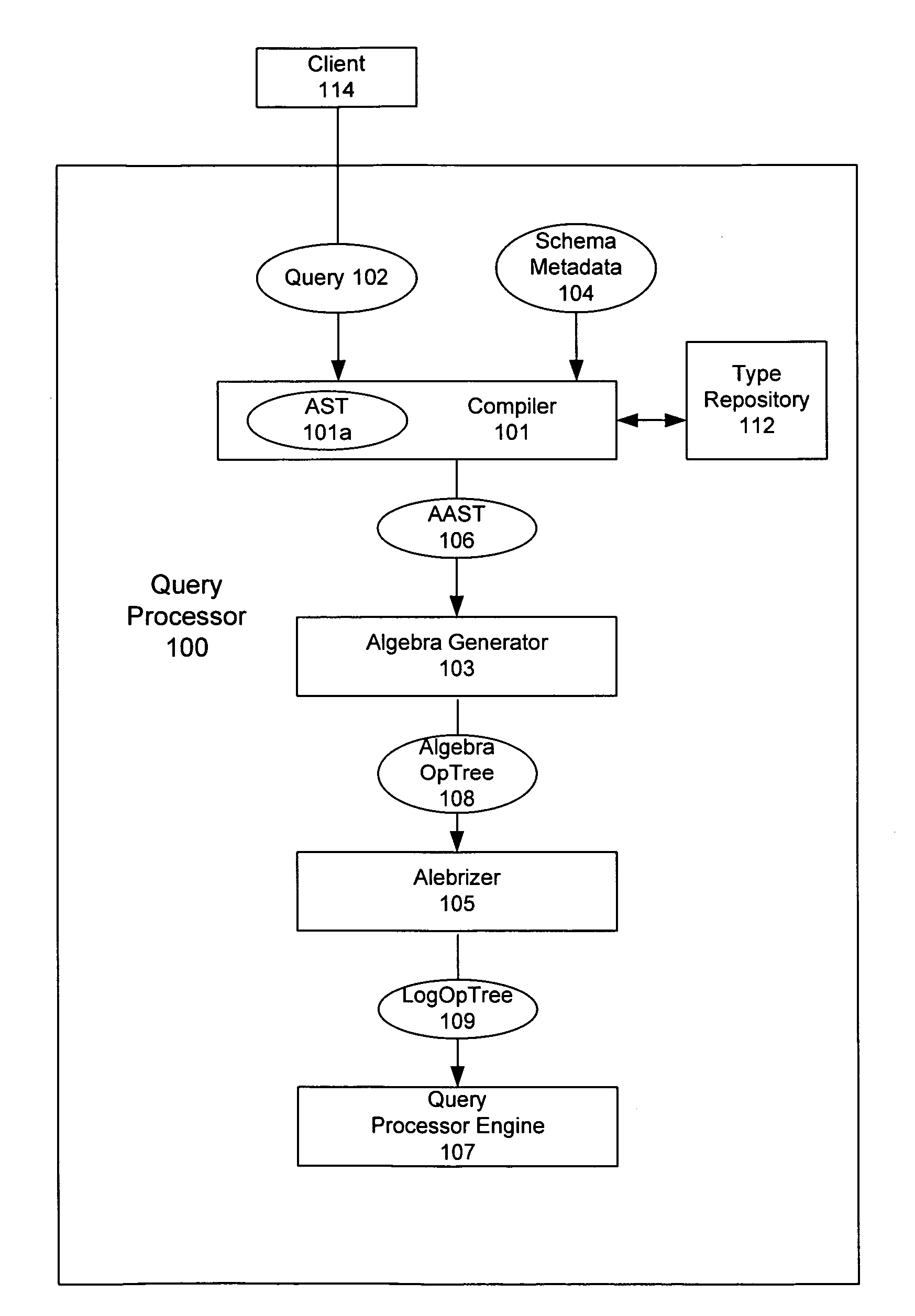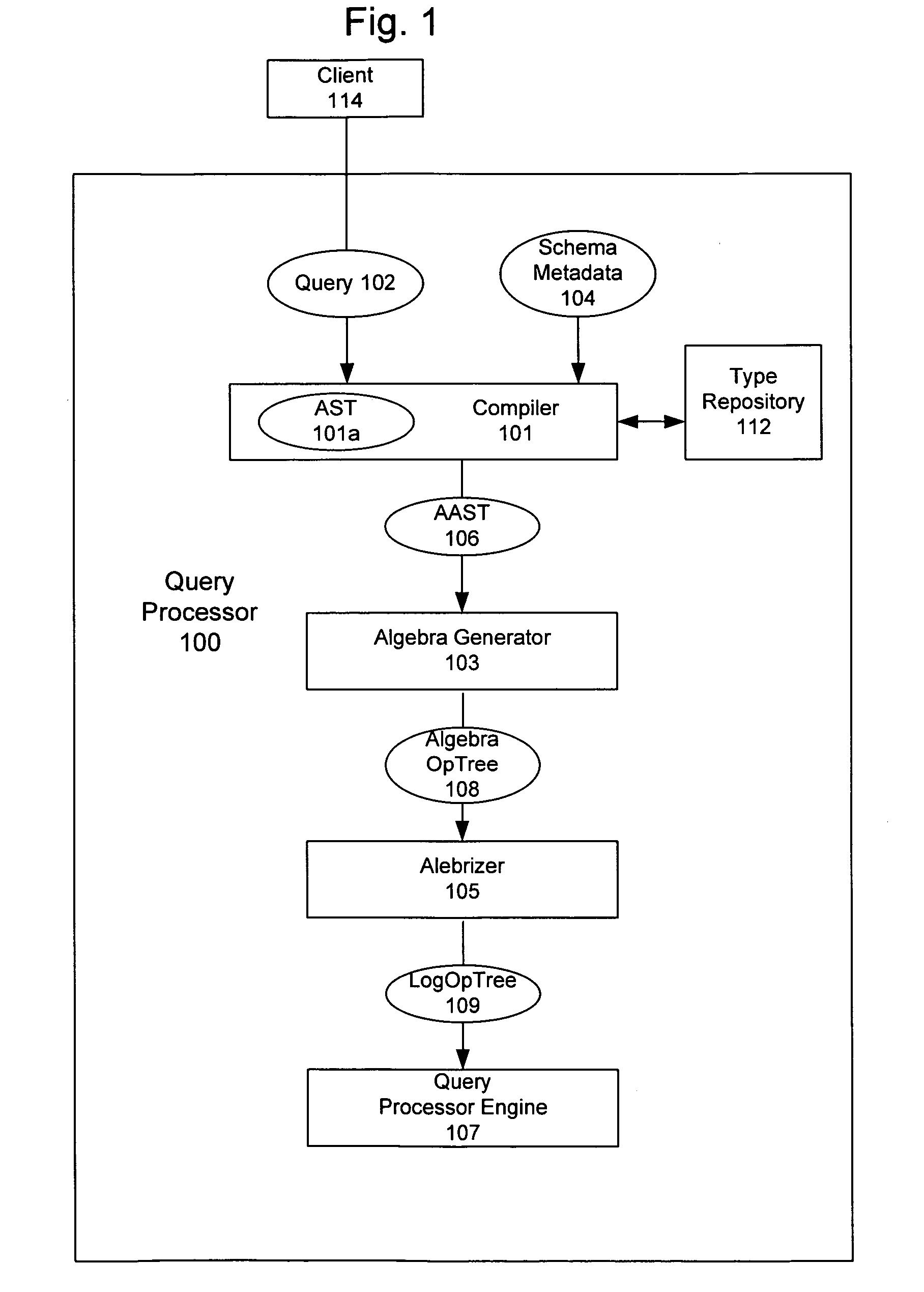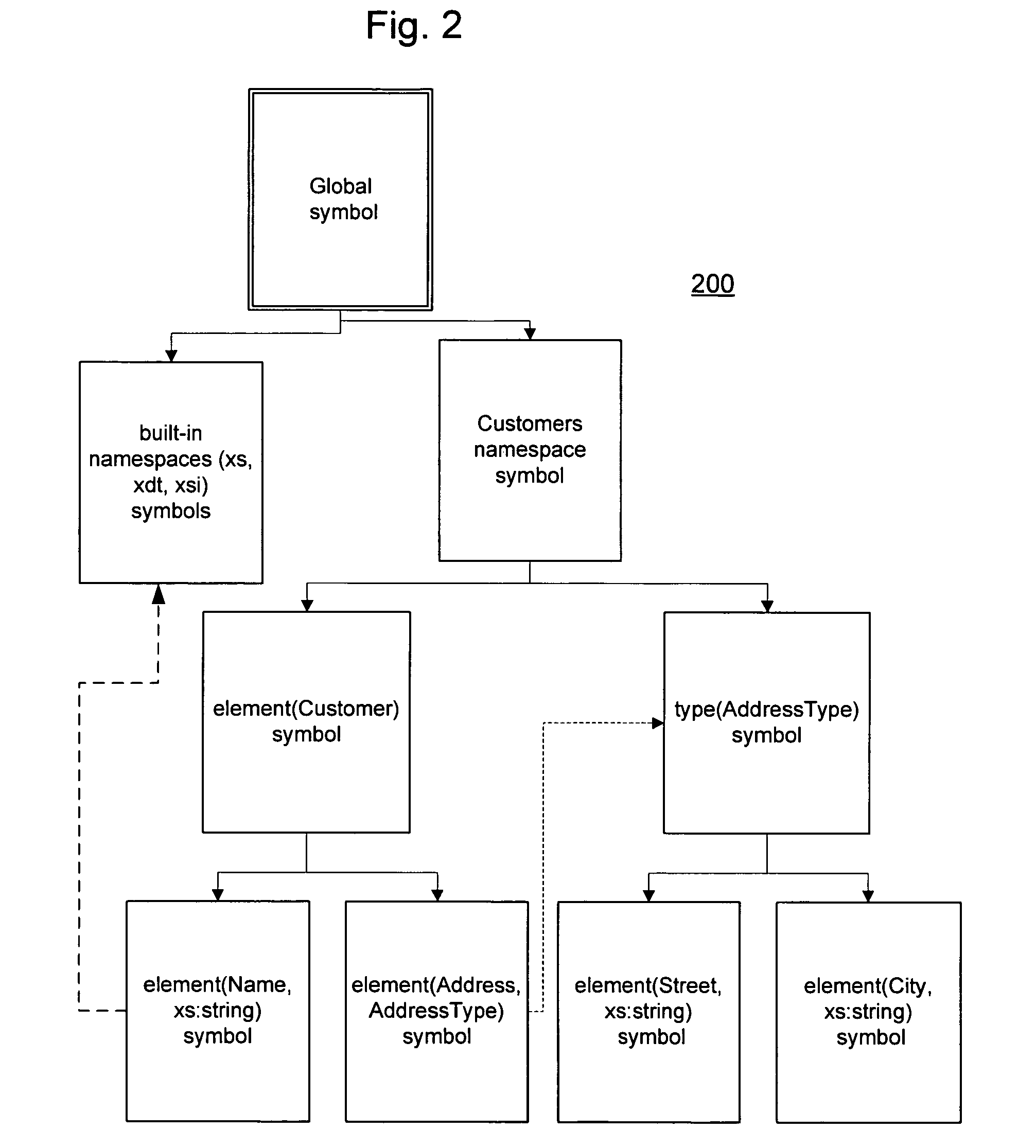System and method for an improved type inference
a type inference and type technology, applied in the field of query processing and optimization, can solve the problems of increasing the processing time required to perform the inference, and reducing the precision of static type inference, so as to improve the accuracy of the calculation and reduce the processing time required
- Summary
- Abstract
- Description
- Claims
- Application Information
AI Technical Summary
Benefits of technology
Problems solved by technology
Method used
Image
Examples
Embodiment Construction
[0021]The subject matter of the present invention is described with specificity to meet statutory requirements. However, the description itself is not intended to limit the scope of this patent. Rather, the inventors have contemplated that the claimed subject matter might also be embodied in other ways, to include different acts or elements similar to the ones described in this document, in conjunction with other present or future technologies.
[0022]An exemplary query processor 100 in accordance with the present invention is shown in FIG. 1. Compiler 101 retrieves schema metadata 104 that describes type information for queryable data. The schema may be defined in a type tree language such as, for example, extensible markup language (XML). Compiler 101 then loads schema metadata 104 into type repository 112. Type repository 112 may be, for example, a symbol table, which is described in detail below with reference to FIG. 2. When an incoming query 102 from client 114 is received at co...
PUM
 Login to View More
Login to View More Abstract
Description
Claims
Application Information
 Login to View More
Login to View More - R&D
- Intellectual Property
- Life Sciences
- Materials
- Tech Scout
- Unparalleled Data Quality
- Higher Quality Content
- 60% Fewer Hallucinations
Browse by: Latest US Patents, China's latest patents, Technical Efficacy Thesaurus, Application Domain, Technology Topic, Popular Technical Reports.
© 2025 PatSnap. All rights reserved.Legal|Privacy policy|Modern Slavery Act Transparency Statement|Sitemap|About US| Contact US: help@patsnap.com



